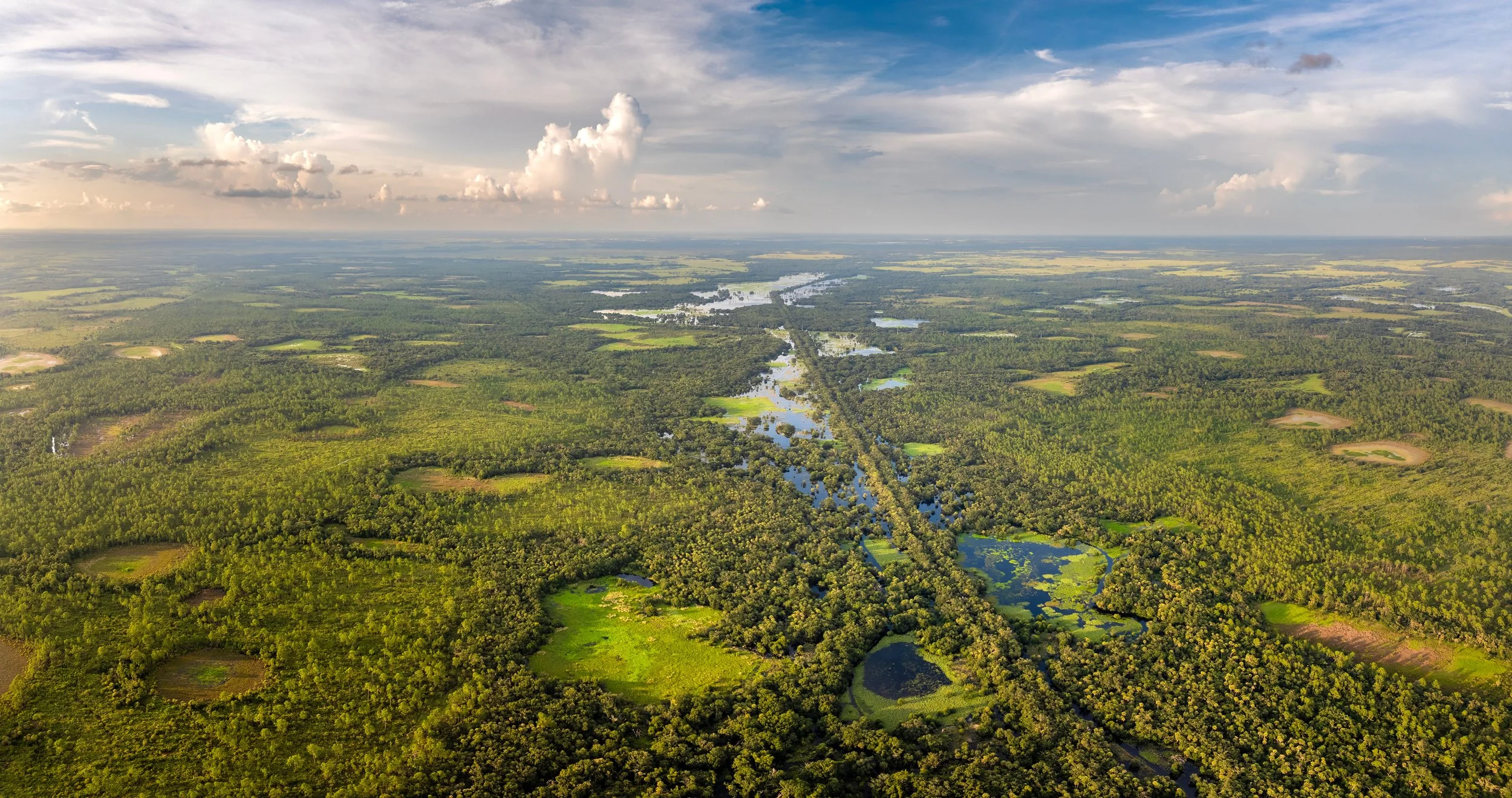Anyone who has ever worked in land conservation knows that the hardest challenges to navigate are often made of paper. In the case of the Florida Everglades, that meant hundreds of thousands of deeds, surveys, and handwritten records, some dating back to the 1800s, scattered across courthouses and archives. For decades, the mineral rights beneath nearly half a million acres of south Florida existed in a kind of administrative fog. The sheer complexity of establishing clear title had deterred everyone who had tried before.
When WildLandscapes and its partners began the Green Heart of the Everglades project, we knew that securing the mineral estate would be the keystone of permanent protection for Big Cypress National Preserve and the Florida Panther National Wildlife Refuge. We were fully prepared for the patient, painstaking work required to make those rights legally clear and defensible for federal acquisition - though perhaps not for just how much grey hair the process would produce along the way.
Ownership beneath the Everglades is mapped in 640-acre sections, and only those holding a majority share in each can act on the mineral rights, making precise title work essential across every single acre.
Untangling Half a Million Acres
The mineral estate beneath the Everglades covers roughly 449,689 acres, divided into neat surveyor’s blocks of 640 acres each. To do anything with the rights below, you first have to know exactly who owns what share of each section, because under Florida law, only those holding a majority interest can exercise mineral rights.
That meant tracing ownership one section at a time, verifying each parcel’s boundaries, land use, and percentage of ownership, correcting discrepancies caused by canals, roads, and decades of irregular mapping. The Collier family, whose holdings dominate the mineral estate, had to be confirmed as majority owners across key areas before any transaction could move forward.
The most critical of those was the Sunny Strand, a narrow geological formation that runs through Big Cypress and begins near the Florida Panther National Wildlife Refuge. This is where oil lies closest to the surface and where, historically, the most commercial interest has focused. Ensuring the Colliers held 100% of the mineral rights in that band was essential - without it, the project would have stalled before it began.
Establishing clear, insurable title for nearly half a million acres of mineral rights meant tracing ownership section by section through a century of deeds, surveys, and courthouse records.
Researchers spent months in courthouse basements and archives, reviewing handwritten deeds, reconciling overlapping claims, and building a defensible chain of title. Piece by piece, the fog lifted, and for the first time in history, the ownership of the subsurface beneath Big Cypress became fully mapped and insurable.
By August 2024, after two years of surveys and legal review, the U.S. Department of the Interior (DOI) accepted the completed title package, a milestone that made federal acquisition legally possible for the first time. It was a quiet breakthrough, fifty years in the making.
From Title to Value: The Appraisal Journey
Once the title was clear, the next challenge was to determine what those mineral rights were actually worth. The appraisal process, informed by the Department of the Interior standards, was as technical and layered as the geology itself.
It unfolded in three stages. The first was a market analysis, comparing similar mineral estates to establish a preliminary range of value, a reality check before deeper, costlier assessments began. The second, the income approach, focused on the Sunny Strand, where limited extraction already exists. Using a combination of 2D and 3D seismic data, engineers and appraisers estimated how much oil might remain underground, what it would cost to bring to market, and whether it would be economically viable.
The oil beneath Big Cypress is heavy, sulfur-rich, and hard to refine - of low economic value but immense ecological cost - making the case for permanent protection unmistakable.
The findings were striking. The oil in question is a heavy, sulfur-rich crude, difficult to refine and used mainly for lubricants and asphalt, not transportation fuel. Its limited economic value, when weighed against the ecological cost of extraction in one of the world’s most sensitive wetlands, strengthened the case for permanent protection.
The final step, the comprehensive appraisal, organised the mineral estate into four categories:
Proven productive areas with existing wells;
High-potential zones with confirmed geology but no production;
Speculative regions where seismic data suggests potential but remains unverified; and
Non-producing lands, valuable mainly because ownership restricts incompatible surface use.
The resulting valuation, prepared by a consortium of appraisal firms and very nearly complete, is expected to be over US$ 200m.
Roseate spoonbills are one of the Everglade’s most spectacular inhabitants.
Why It Matters
Title work and appraisal studies aren’t that exciting to talk about. There are no dramatic before-and-after photos, no fieldwork montages, just the relentless grind of due diligence, the kind of effort that determines whether conservation remains an idea or becomes a legacy.
Without clear, insurable title, there can be no acquisition. Without a defensible appraisal, there can be no funding. And without those two foundations, no amount of goodwill can permanently protect a landscape.
Yet this unglamorous work is what has made the Green Heart project real. It has brought landowners, tribes, and agencies into alignment, creating a framework that the Department of the Interior and the Collier family can build upon with transparency and trust - and that is really exciting.
Where others saw an impenetrable maze of ownership, we saw a path forward, one that could align the legal foundations of Florida’s wilderness with its ecological future. It has been slow, meticulous work, the kind that demands patience and faith. But as Marjory Stoneman Douglas once wrote,
“ Be depressed, discouraged, and disappointed at failure and the disheartening effects of ignorance, greed, corruption, and bad politics — but never give up.”






